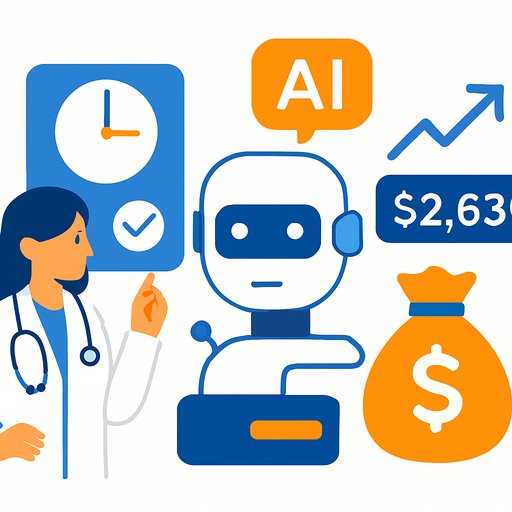AI Redefines Insurance Underwriting Across North America
Underwriting is being rebuilt across the U.S. and Canada. AI, machine learning, and generative models are speeding decisions, sharpening risk selection, and connecting marketing to underwriting in real time.
With consumer expectations rising, regulation tightening, climate risk intensifying, and data volumes exploding, modernizing underwriting is now a business strategy-measured in growth, loss ratio, and expense outcomes.
Evolving Industry Pressures
Life insurers face stalled growth from slow applications and weak digital experiences, especially with younger buyers. Oversight on investment-linked and health-adjacent products limits free use of data and full automation.
In P&C, climate risk is reshaping pricing and appetite. Wildfire, flood, and storm exposure are pushing adoption of telematics and usage-based programs like Allstate's Drivewise and Desjardins' Ajusto.
Commercial carriers depend on data-driven underwriting to scale the middle market, but rules vary widely by line and jurisdiction. Workers' compensation is set at the state level, complicating automation and limiting granularity on safety culture, workforce practices, and remote or gig roles.
Governance is now table stakes. States such as Colorado require insurers to justify algorithmic decisions and prevent unfair discrimination. See SB21-169 for context: Colorado SB21-169.
Marketing with AI
Acquisition and retention are syncing with underwriting in practical ways. Behavioral retargeting predicts when prospects are shopping and serves precise quotes at the right moment.
- Segmentation flags high-intent leads based on web activity, life events, and external data.
- Generative tools produce hyper-personalized emails, landing pages, and quote narratives.
- ZIP-code messaging pairs local risk alerts (wildfire, flood) with relevant offers and discounts.
- CRM-integrated models rank target industries by expected profitability for commercial lines.
Life, Annuities, and Health Trends
Accelerated underwriting draws from prescription histories, credit proxies, and behavioral signals to approve low-risk applicants fast-and route edge cases for human review. This trims cycle time without accepting hidden risk.
Group benefits teams use predictive models on EHR-derived summaries to estimate future costs and design plans. Automation speeds onboarding and evidence checks, while generative tools create plain-language explanations like "why you got this rate," improving transparency and satisfaction.
Property/Casualty Advances
Computer vision from drones, CCTV, and satellite imagery assesses properties, validates repairs, and flags roof wear before claims spike. Telematics and ML refine auto risk with behavior-driven pricing.
NLP scans company sites, filings, and social media to build live business risk profiles-for example, contractor violations or litigation exposure. Generative tools draft inspection notes and simulate losses to test coverage and limits.
Workers' comp models now include movement data, ergonomic signals, and jobsite sensors. New tools will auto-generate safety checklists, training snippets, and prevention guidance by industry to reduce frequency and severity.
Risk Data and Climate Context
Exposure modeling is improving as more public and private datasets come online. Teams use indices and perils data to inform appetite, pricing, and aggregation controls.
For reference, FEMA's National Risk Index provides a public view into community-level hazard exposure: FEMA National Risk Index.
Operating Model and Governance That Scales
- Model inventory and lineage: document inputs, purpose, monitoring, and owners for every model, including third-party scores.
- Fairness and performance testing: track stability, drift, disparate impact, and calibration by segment.
- Explainability and contestability: provide clear reasons for adverse decisions and enable simple appeal paths.
- Human-in-the-loop: set thresholds where underwriters must review, and log overrides to improve models.
- Data rights and privacy: limit use of sensitive attributes and implement strict vendor governance.
What to Ship This Quarter
- Map your funnel: identify 3 friction points across quote, bind, and issue; apply automation where intent is high and risk is low.
- Pilot accelerated underwriting for a narrow segment with strict guardrails, clear disclosures, and audit-ready documentation.
- Deploy personalized quote narratives that explain drivers of price and next-best actions.
- Integrate CRM and underwriting: feed win-rate and loss ratio signals back into targeting and appetite rules.
- Stand up governance basics: model registry, bias testing by protected class proxies, and monthly performance reviews.
- Upskill teams on prompt strategies and AI-assisted analysis to boost throughput without sacrificing judgment. If you need a fast start, explore role-based options here: AI courses by job.
Overpreparing for the Future
AI now touches every part of underwriting-from first touch to post-issue service. Carriers that embed it across the value chain will quote faster, price with more precision, improve book quality, and retain more customers.
The playbook is clear: connect marketing to risk, automate low-risk workflows, keep humans on high-impact decisions, and prove fairness with strong governance. Move early, measure rigorously, and keep shipping.
Your membership also unlocks:






